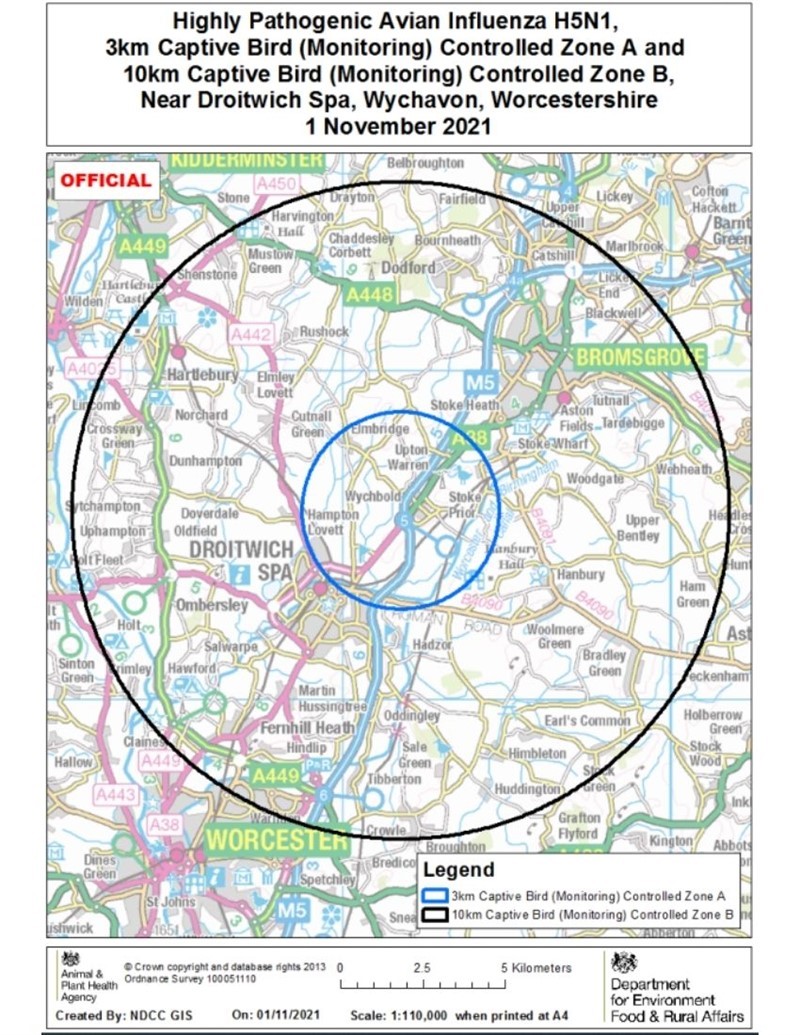This page is being updated regularly with information on the latest cases, including the restrictions that apply in the Disease Control Zones around the infected premises.
The latest information on avian influenza in wild birds can be found on the Gov.uk website: Avian influenza (bird flu): Wild birds in the UK. The risk of incursion of highly pathogenic avian influenza H5 in wild birds has increased from medium to high.
The risk level for poultry and captive birds has been increased from low to medium where biosecurity on premises is below the required standard. More information on the current risk level can be found at the Gov.uk website: Avian influenza (bird flu): Risk level.
Further information on avian influenza can be found here:
13 November 2021, Hambleton
On the 13 November 2021 Avian influenza H5N1 was confirmed in birds at a premises near Leeming Bar, Hambleton, North Yorkshire. Further testing confirmed this to be a highly pathogenic strain. A 3km Protection Zone and 10km Surveillance Zone have been declared around the premises (please see map below). You can check to see if you are in a Disease Control Zone by using the APHA’s interactive map.
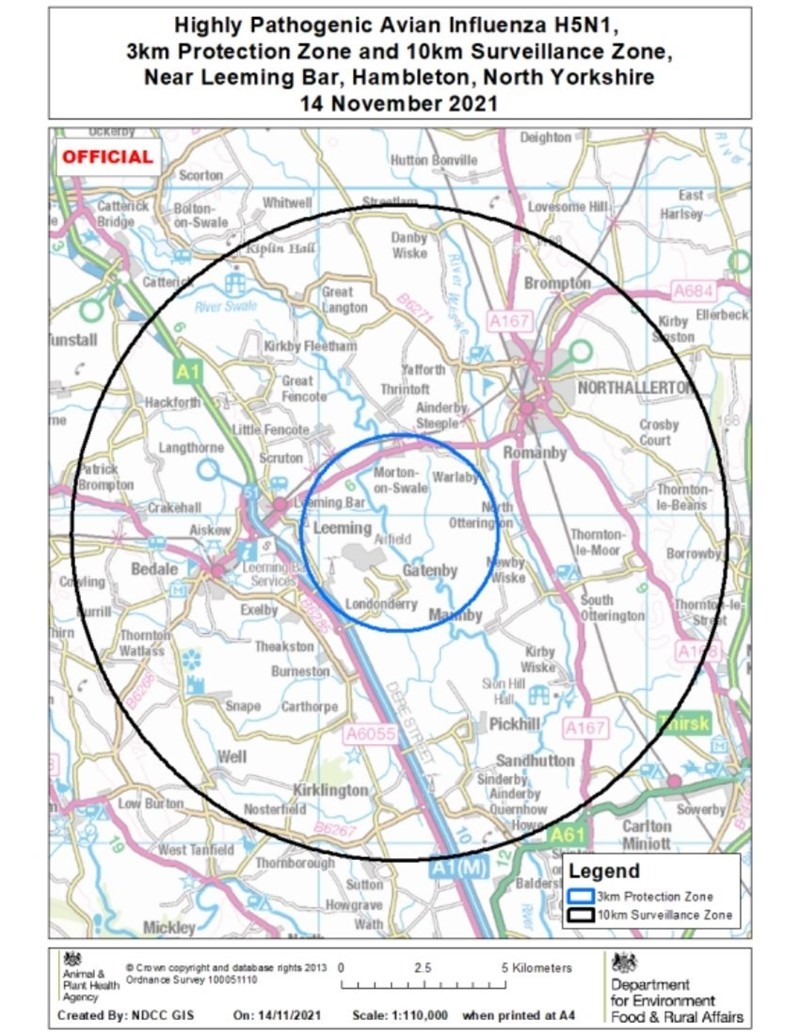
12 November 2021, Flyde
On the 12 November 2021 Avian influenza H5N1 was confirmed in birds at a premises near Salwick, Fylde, Lancashire. Further testing has confirmed this to be a highly pathogenic strain. A 3km Protection Zone and 10km Surveillance Zone has been declared around the premises (please see map below). You can check to see if you are in a Disease Control Zone by using the APHA’s interactive map.
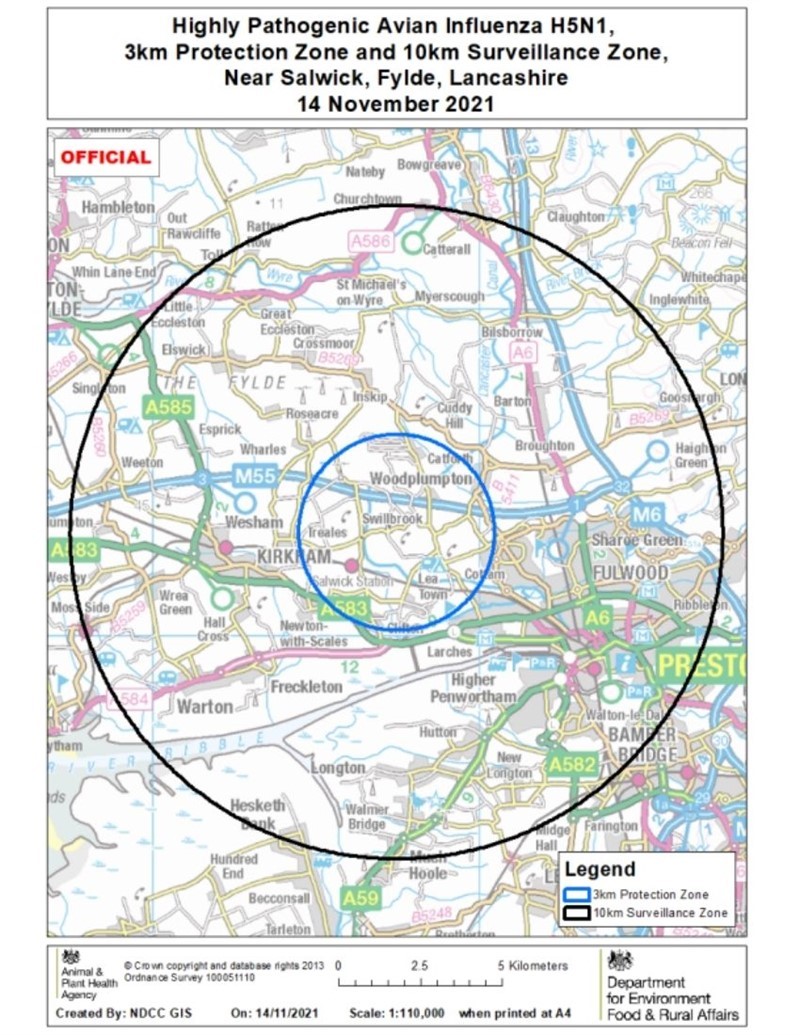
11 November 2021, Tendring
On 11 November 2021 avian influenza H5N1 was confirmed in birds at a premises near Frinton-on-Sea, Tendring, Essex, England. Further testing has confirmed this to be a highly pathogenic strain. A 3km Protection Zone and 10km Surveillance Zone have been declared around the infected premises (please see map below).
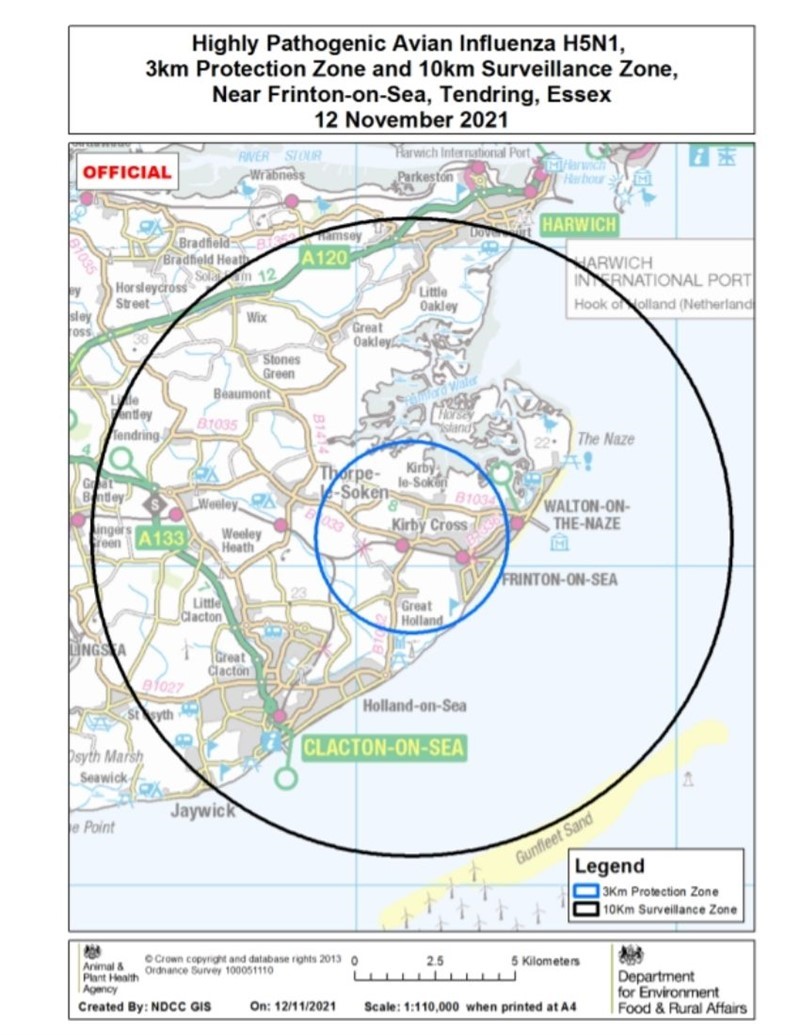
7 November 2021, Bidford
Avian influenza H5N1 has been confirmed in a small poultry unit at a premises near Alcester, Bidford, Warwickshire. Further testing has confirmed this to be a highly pathogenic strain. A 3km Protection Zone and 10km Surveillance Zone have been declared around the infected premises (please see map below).

3 November 2021, AIPZ announced and outbreak confirmed in Angus, Scotland
On 3 November the Chief Veterinary Officers of England, Wales and Scotland announced a GB-wide Avian Influenza Prevention Zone, with mandatory biosecurity measures for all poultry keepers.
On 3 November avian influenza H5N1 was confirmed in birds at a premises in the Angus constituency in Scotland. On 4 November this case was confirmed as highly pathogenic (HPAI H5N1). A Protection Zone, Surveillance Zone and Restricted Zone are now in place around the infected premises. Details of the measures that apply within these zones can be found in the declaration on the Scottish government website here.
1 November 2021, Wrexham
Avian influenza H5N1 (further testing has confirmed this to be a highly pathogenic strain) was confirmed in poultry and wild birds at a premises near Chirk, Wrexham, Wales. The Welsh Government has put in place a 3km Protection Zone and 10km Surveillance Zone (see map below) as well as a 10km Restricted Zone. See the Welsh Government website for further information.
A small area of the 3km Protection Zone and part of the 10km Surveillance Zone of the Temporary Control Zone extends into England and equivalent zones have been declared by Defra for these areas in England.
Information on the restrictions in place within the Disease Control Zones can be found on our page on NFUonline: Avian influenza: What to do if you are in a Restricted, Protection or Surveillance Zone.
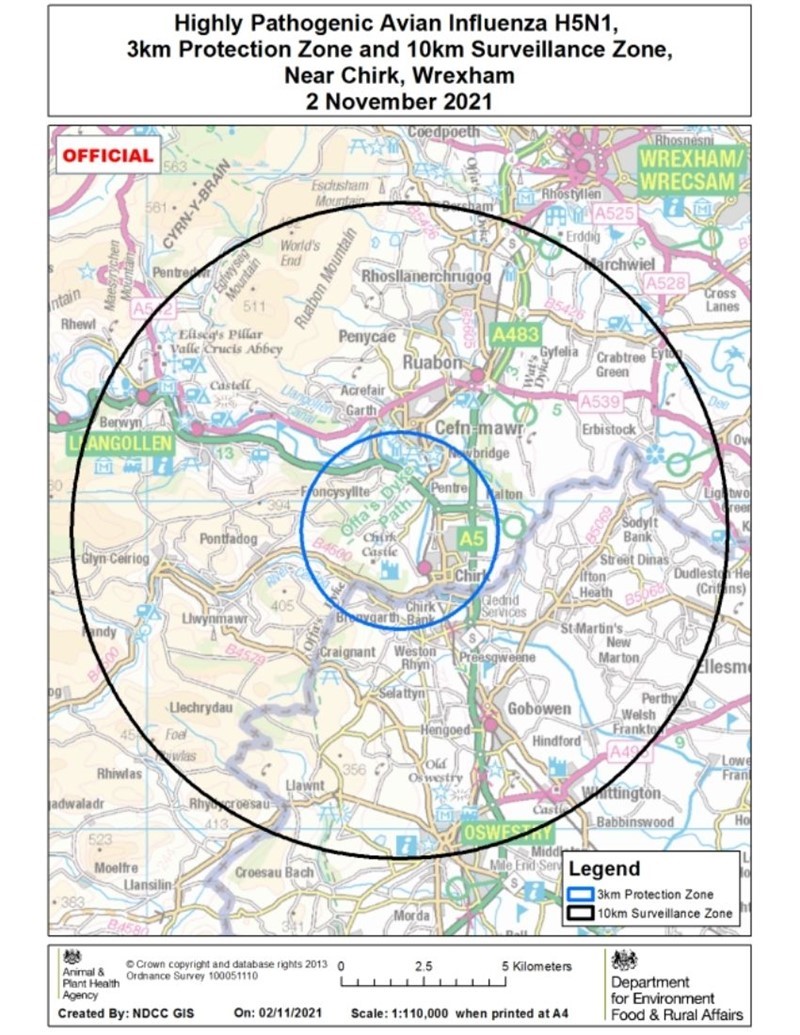
26 October 2021, Droitwich
The UK chief veterinary officer Christine Middlemiss has confirmed that avian influenza H5N1 has been identified in captive birds at a wild bird rescue centre near Droitwich Spa, Wychavon, Worcestershire.
Further testing has now confirmed this to be a highly pathogenic strain and all birds on the infected premises have been humanely culled. Following further field and laboratory investigations, on 1 November 2021 the 3km Protection Zone and 10km Surveillance Zone were revoked and replaced with 3km and 10km Captive Bird (Monitoring) Controlled Zones around the premises. Licences are not required for movements into or out of a Captive Bird (Monitoring) Controlled Zone unless originating from or ending in a Protection Zone or Surveillance Zone.
Expert advice
NFU chief poultry adviser Aimee Mahony said:
“The NFU remains in close dialogue with both Defra and the Animal and Plant Health Agency on this issue and we are working to support any members affected by this case of avian influenza.
“I would urge all of our poultry members to continue to practise enhanced biosecurity at all times and to be vigilant for any signs of disease in their flock. I would also ask members of the public who keep birds such as chickens, geese and ducks to follow Defra’s biosecurity advice. All bird keepers have an important part to play in reducing the risk of avian influenza, not only to their own birds but also to the commercial poultry sector.
“It is worth reminding people that the risk to public health from the virus is very low and the Food Standards Agency has also made it clear that bird flu poses a very low food safety risk for UK consumers.”
The UK chief veterinary officer Christine Middlemiss said:
"As we move into the higher risk period over winter, bird keepers should pay extra attention to the health of their birds. Anybody who suspects disease should report it to their vet or the APHA immediately. The best way to tackle this disease is for poultry keepers to ensure that they have strong biosecurity measures in place."
Simple measures to improve biosecurity
There are some simple measures that all poultry keepers should take to protect their birds against the threat of avian influenza. These apply to people running a large commercial farm or those keeping a few hens in their back garden and are also applicable to those rearing game birds. They include:
- Keeping the area where birds live clean and tidy
- Controlling rats and mice
- Regularly cleaning and disinfecting any hard surfaces
- Keeping chickens and turkeys completely separate from ducks and geese
- Conducting regular maintenance checks on bird housing
- Cleaning moss off the roofs, emptying gutters and removing vegetation between sheds where birds are kept
- Drawing up contingency plans for storing bedding and dealing with pests
- Placing birds’ feed and water in fully enclosed areas that are protected from wild birds and removing any spilled feed regularly
- Putting fencing around outdoor areas where birds are allowed and limiting their access to ponds or areas visited by wild waterfowl
- Cleaning and disinfecting footwear before and after entering premises where birds are kept
More information
- Poultry keepers and members of the public should report dead wild birds to the Defra helpline on 03459 33 55 77.
- Bird keepers should report suspicion of disease to APHA on 03000 200 301.
- Bird keepers should also familiarise themselves with the government’s avian influenza advice.

